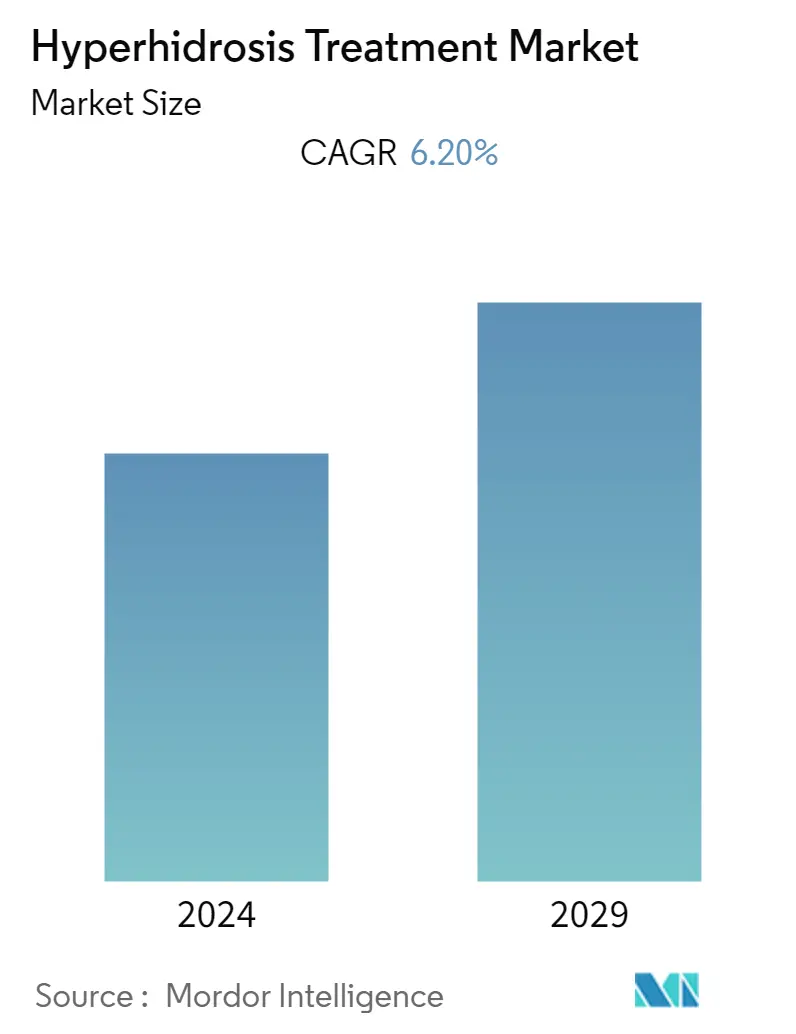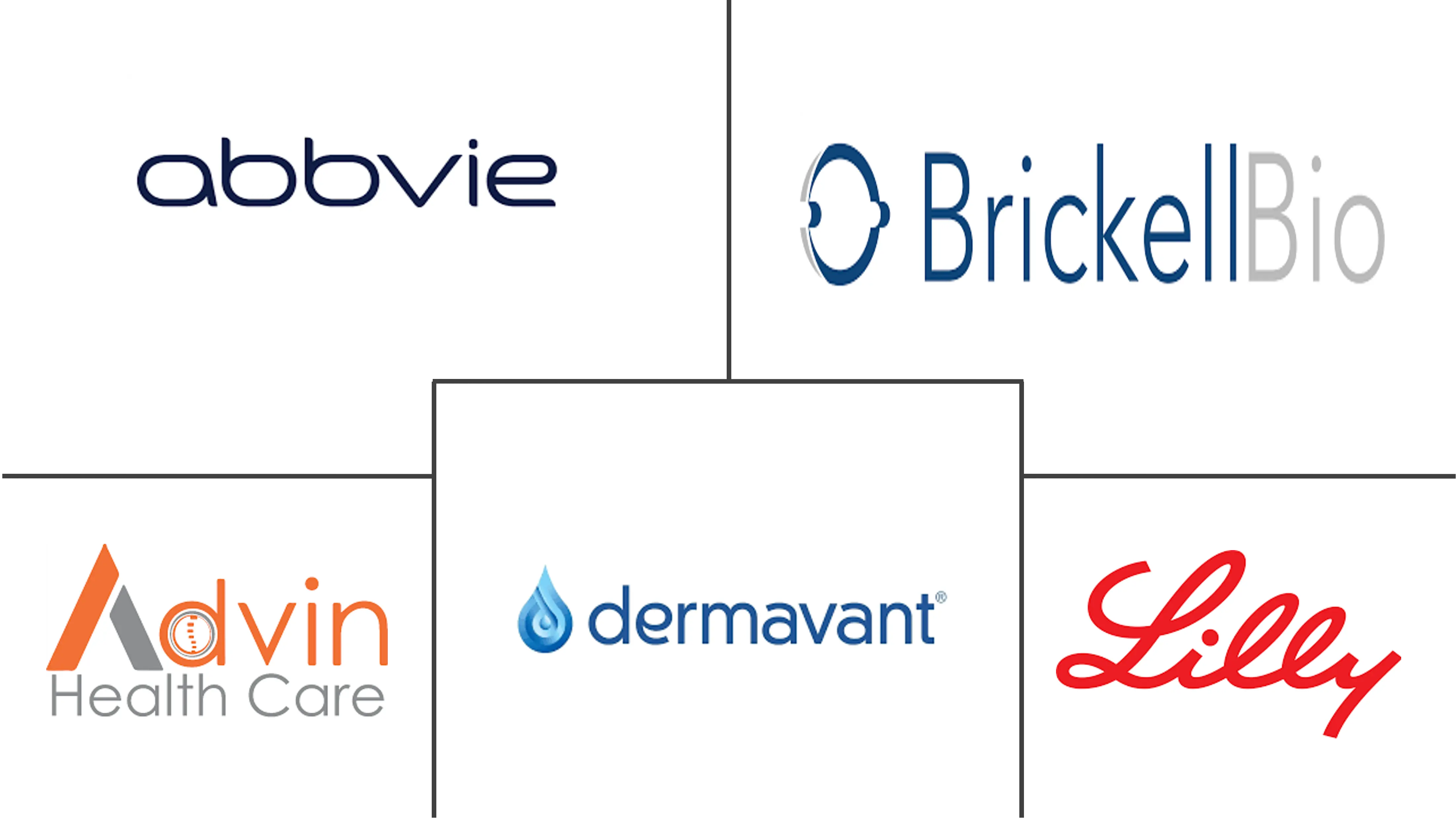Market Size of Hyperhidrosis Treatment Industry

| Study Period | 2021 - 2029 |
| Base Year For Estimation | 2023 |
| Forecast Data Period | 2024 - 2029 |
| CAGR | 6.20 % |
| Fastest Growing Market | Asia-Pacific |
| Largest Market | North America |
Major Players
*Disclaimer: Major Players sorted in no particular order |
Need a report that reflects how COVID-19 has impacted this market and its growth?
Hyperhidrosis Treatment Market Analysis
The hyperhidrosis treatment market is expected to register a CAGR of 6.2% over the forecast period.
The pandemic has significantly impacted the market. For instance, as per the NCBI study published in January 2021, during the initial phase of the COVID-19 infection, the condition of most of the prolonged cases of hypothermia resulted in fever. Thus, the demand for hyperhidrosis treatment increased initially; however, the market also witnessed an adverse impact. According to the International Hyperhidrosis Society in May 2021, sweat could help prevent the transmission of COVID-19. The organization supports that claim with quotes from experts like dermatologist Adam Friedman of George Washington University, who noted that "Sweat has some inherent antimicrobial activity." Therefore, the market witnessed moderate growth during the initial days of the pandemic. However, with the declining cases of COVID-19, the market has started to gain momentum and is expected to witness an upward trend over the forecast period.
The key factors bolstering the growth of the hyperhidrosis treatment market are the rise in the prevalence of secondary hyperhidrosis conditions and the increase in investments in research and development by the market players. According to the NCBI study published in October 2021, in the United States, the prevalence rate of this disorder was estimated to be around 3.0% of the total population. Emotional, psychological, social, and occupational impairment can all be caused by hyperhidrosis.
Some other factors that could potentially impact the market's growth are the promising pipeline for hyperhidrosis treatment, the growing prevalence of depression and anxiety, growing awareness about hyperhidrosis, and the presence of favorable reimbursement policies. For instance, in October 2021, Brickell Biotech Inc. reported positive topline results from the Phase 3 pivotal Cardigan I and Cardigan II studies, which evaluated sofpironium bromide gel, 15% as a once-daily topical formulation in patients with primary axillary hyperhidrosis. Thus, the increasing burden of hyperhidrosis and treatment advancements are anticipated to bolster the demand for its treatment, thereby boosting the market's growth.
Geographical expansions, product launches, acquisitions, collaborations, mergers, and partnerships by major players to establish a strong presence positively impact the market. For instance, in April 2021, Fortress Biotech, the partner company of Journey Medicals, entered into a definitive agreement to acquire Qbrexza (glycopyrronium) in the United States from Dermira, a wholly-owned subsidiary of Eli Lilly. Thus, owing to these factors, the market studied is expected to witness growth over the forecast period.
However, short-term results of cosmetic and therapeutic procedures are likely to restrain the growth of the hyperhidrosis treatment market over the forecast period.
